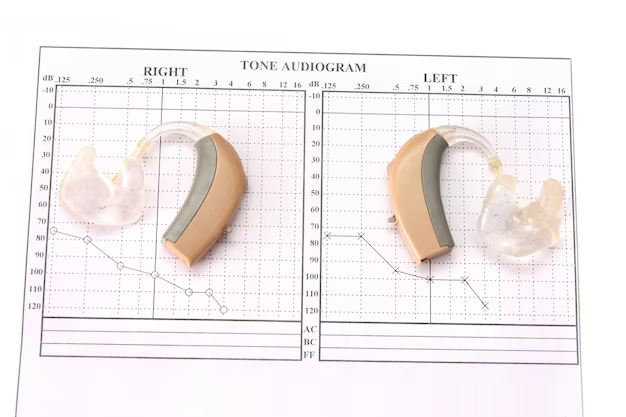Are Hearing Aid Domes Interchangeable? An In-Depth Guide
Captivating the Curiosity
If you're navigating the world of hearing aids, you might find yourself facing a myriad of questions, one of them being the interchangeability of hearing aid domes. As small and seemingly simple as these components are, domes play a vital role in the functionality and effectiveness of hearing aids. Your queries are valid and widespread: Can different domes be used interchangeably? Are there benefits to swapping them? Let's delve into these questions and explore everything you need to know about hearing aid domes.
Understanding Hearing Aid Domes
Hearing aid domes are tiny, soft rubber or silicone attachments that fit over the end of a hearing aid's receiver. They help funnel sound into the ear canal and ensure the device stays snugly in place. Domes can significantly influence the comfort, sound quality, and performance of your hearing aids.
Types of Hearing Aid Domes
- Open Domes: These allow for natural sound to enter the ear, often preferred by those with mild to moderate hearing loss.
- Closed Domes: These provide a more occlusive fit, often selected by individuals needing a boost in low-frequency sound.
- Power Domes: These are usually used for more significant hearing loss, offering maximum occlusion to increase amplification.
The Lure of Interchangeability
The concept of interchangeability can be enticing, promising flexibility and customization. For those who wear hearing aids daily, anything that can enhance comfort or performance seems worthy of exploration. But are hearing aid domes truly interchangeable?
Compatibility and Caution
While some hearing aid domes might fit different models or brands, they are not universally interchangeable. Here's why:
- Size and Shape: Domes vary in size, diameter, and shape. Even slight differences can affect comfort and sound quality.
- Hearing Aid Model: Some domes are designed specifically for certain hearing aid models. Using the wrong dome can impair device functionality or even damage the hearing aid.
- Hygiene and Safety: Every switch should prioritize hygiene. A poorly fitting dome can trap moisture or create discomfort, leading to potential ear issues.
Determining the Right Fit 🌟
To ensure optimal performance and comfort:
- Consult a Professional: Always discuss changes with an audiologist. They can advise on appropriate dome types and sizes.
- Trial and Observation: Consider trying different domes under professional guidance to assess the best fit and sound quality.
- Regular Maintenance: Replace domes regularly to maintain hygiene and performance. A worn dome can impact sound delivery and comfort.
📝 Key Takeaways for Dome Selection
- 🔍 Assessment: Evaluate your hearing loss type and lifestyle needs.
- 👂 Comfort Check: The perfect dome should feel almost unnoticeable after prolonged wear.
- 🔄 Trial: Testing different options can help pinpoint your ideal choice.
The Role of Hearing in Dome Selection
Every individual experiences hearing loss differently, and finding the right dome involves understanding your specific needs.
Audiologist Insight
Audiologists possess the expertise to determine which dome will best complement your hearing aid and enhance your listening experience. They might use tools like audiograms to better understand your hearing profile and recommend domes accordingly.
Benefits of the Right Dome
Choosing the right dome is more than a matter of comfort—it's an essential element in optimizing your hearing experience. The right dome can:
- Improve sound clarity by reducing distortion.
- Prevent feedback, a common annoyance with ill-fitting domes.
- Enhance comfort, making all-day wear more tolerable.
Common FAQs About Hearing Aid Domes
Are larger domes better for severe hearing loss?
Not necessarily. While power domes that are larger may be used for severe loss, it's crucial that the fit is personalized. Larger doesn't always equate to better.
Can I clean my domes instead of replacing them?
Regular cleaning is necessary, yet consistent replacement is preferred to maintain hygiene and performance reliability.
Are there hypoallergenic options?
Yes, many manufacturers offer hypoallergenic materials for those with sensitivities.
Visual Guide: Selecting and Replacing Hearing Aid Domes
| Type of Dome | Best For | Considerations |
|---|---|---|
| Open Domes | Mild to Moderate Loss | Allows natural sounds; minimal occlusion; less intensive amplification. |
| Closed Domes | Moderate Loss | More occlusion; prevents sound leakage; effective for maintaining low-frequency sounds. |
| Power Domes | Severe Loss | Maximum occlusion; enhances amplification; pivotal for profound hearing loss support. |
Final Thoughts: Navigating Your Hearing Journey
In the quest for the perfect hearing aid experience, don't underestimate the power of well-chosen domes. While the thought of interchangeability may appeal to those looking for convenience or cost-saving, it's essential to prioritize functionality and comfort. What might suit one person won't necessarily suit another, so personalizing your approach with the help of professionals is key.
Remember, seeking the right fit is about enhancing your auditory world, making sure every conversation, every sound, and every moment is rendered as clearly as possible. Embrace the journey and celebrate the clarity that comes from making informed choices on your path to better hearing.

Related Topics
- a Plus Hearing Aid Centers
- a Real Pain Showtimes Near Centerville
- Are Airpods Bad For Your Ears
- Are Apple Second Generation Airpods Hearing Aids
- Are Audien Hearing Aids Just Amplifiers
- Are Costco Hearing Aids As Good As Others
- Are Costco Hearing Aids Good
- Are Hearing Aid Subscriptions Worth It
- Are Hearing Aid Tax Deductible
- Are Hearing Aids a Tax Deduction